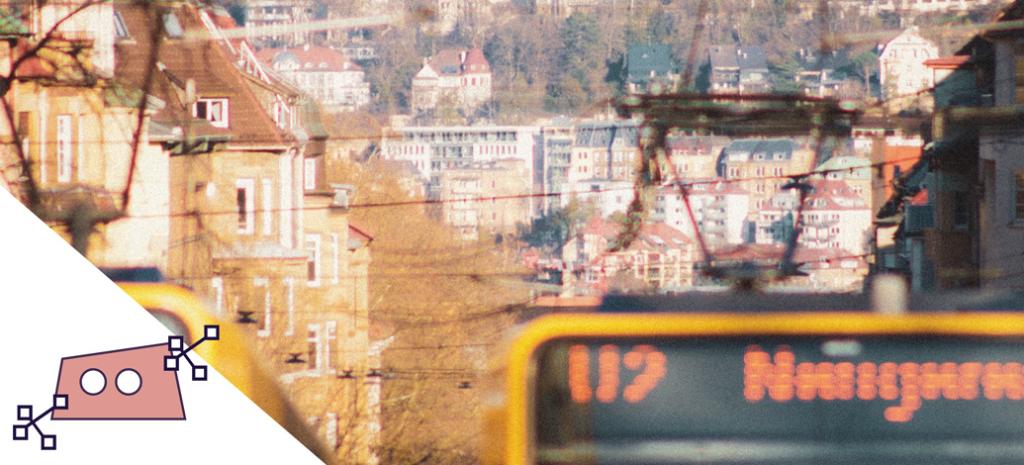
Global | regional | local
Impact of climate change in Baden-Württemberg
- higher average temperatures
- hotter days and more tropical nights
- earlier start of vegetation & longer growing season
- change of precipitation still unclear
- change of mean wind speed still unclear
(Quelle: Regionaler Klimaatlas Deutschland, Helmholtz Gemeinschaft)
Climate Change & Stuttgart
- The number of summer days in Stuttgart with temperatures above 25°C has increased from 40 (1987) to 87 (2020) and thus more than doubled.
The number of heat days with more than 30°C was still 25 days in 2020 - for comparison: in the 1990s, it was only about 10 days.
(Quelle: Landeshauptstadt Stuttgart, Amt für Umweltschutz, Abt. Stadtklimatologie)
Importance of green spaces in the city
- Green spaces in the city create a cooler urban climate and a higher quality of life.
- Especially green roofs and facades, avenues, large parks and water elements have a cooling effect and can lower the air temperature.
- Urban and village green spaces include: Parks, forests, green corridors, cemeteries, bodies of water, cycling and hiking paths, sports fields and playgrounds, as well as smaller green spaces such as green strips, planted traffic islands, green roofs, etc.
- Ideally, they form a "green network" that runs through the entire settlement area and are an important component of modern urban planning.
Heat island effect
Definition: The urban heat island effect (UHI) is the observed phenomenon of higher air temperatures close to the ground in urban areas compared to rural areas. The measure of the intensity of the heat island effect is the temperature difference between the air temperature in an urban area and the air temperature in an urban area close to the city.
Measurements to reduce the heat island effect:
1. increasing the amount of green space creates cooler areas within urban areas, as greened areas heat up less and cool down faster during the night hours.
2. the creation of green roofs and green facades reduces the heating of urban buildings.
3. building measures can cast shadows or shield direct solar radiation.
4. improving the ventilation of a city results in a better removal of heat stored in the buildings and reduces heat accumulation.
5. reducing building density and height has the effect of improving ventilation, reducing building heating by reducing multiple reflection of radiation, and improving nighttime heat dissipation.
6. the use of highly reflective surface materials (cool colors), especially for roofs (white roofs) and road surfaces, results in more solar radiation being reflected and the building heats up less.
Monitoring as a solution
What is monitoring?
- Long-term recording of various properties, e.g. temperatures, air quality in cities.
- Examples of parameters to be recorded for monitoring climatic change in cities: temperature measurements, recording of green spaces, attractiveness of green spaces, ...
Benefits and opportunities:
- Showing long-term correlations and changes in order to make forecasts.
- Prerequisite for timely response to extreme events.
- Prerequisite for the development of new adaptation strategies, early warning systems, etc.
Searched for: Citizen
Active Climate Detectives & Citizen Advisory Board >> Get involved
Participation role climate detectives - collecting data via apps
GreenspaceHack (www.greenspacehack.com)
- Green spaces can improve mental health and well-being.
- The goal of "GreenspaceHack" is to provide insights for better design of green spaces that promote human as well as environmental health.
- "GreenspaceHack" consists of an APP and a website.
- With the help of surveys, information about urban green spaces can be collected.
Use and information of the GreensspaceHack app (detailed in the Guidelines)
- Select short or long survey.
- Answer as many questions as possible.
- It is best to specify the location and add a picture.
- Submit the survey and you're don
Why do we want to collect data in ParKli using this app?
- We need a strong database on the current state of our local environment.
- Together with you, we would like to go in search of clues and use the GreenspaceHack app to collect data on the state of local green spaces in the city.
- This data basis should make it possible to jointly develop and actively implement local measures to adapt our cities to local climate impacts.
